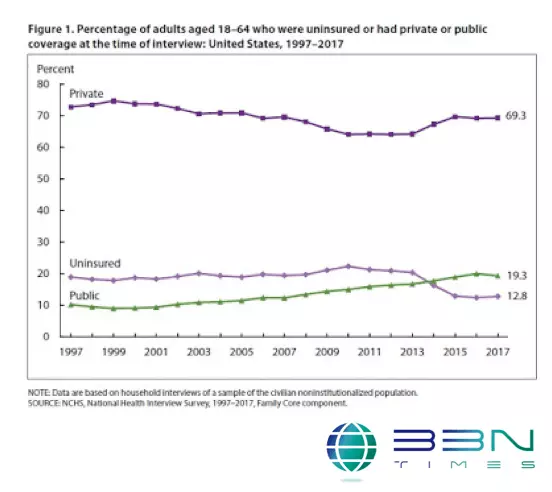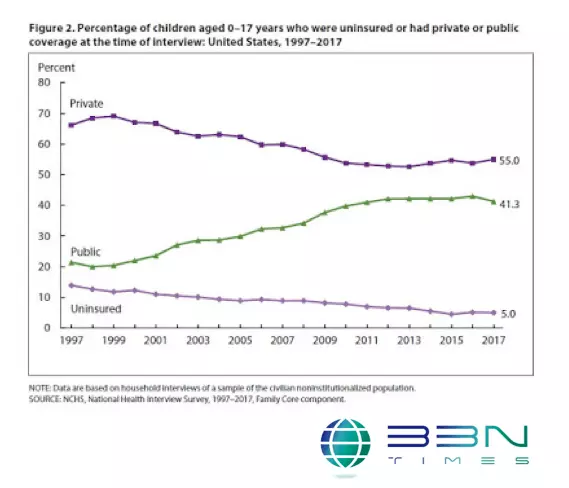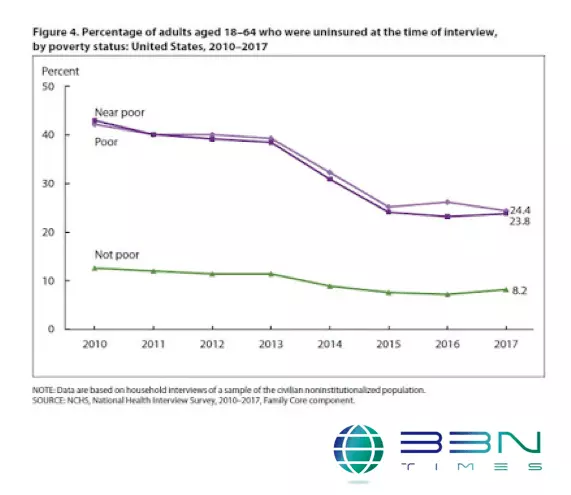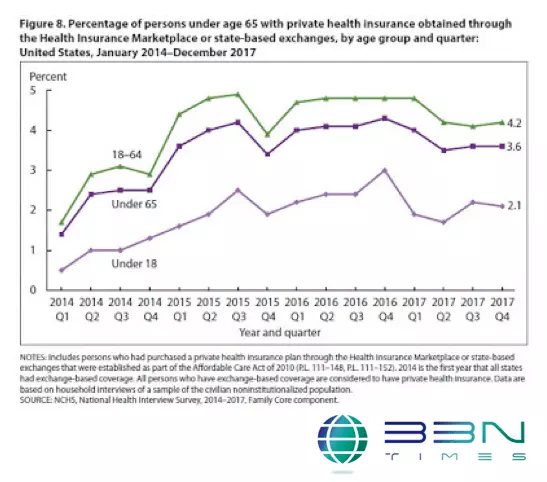One genuine accomplishment of the Patient Protection and Affordable Care Act of 2010 is that it reduced the share of Americans lacking health insurance. The National Center for Health Statistics has just published the most estimates for 2017 in "Health Insurance Coverage: Early Release of Estimates From the National Health Interview Survey, 2017," Robin A. Cohen, Emily P. Zammitti, and Michael E. Martinez (May 22, 2018). Here are a few snapshots:
Those over age 65 have health insurance through Medicare. Thus, it's conventional to focus on the health insurance status of those the age 64 and below the percentage of adults age 18-64 without health insurance drops sharply right after the passage of the 2010 legislation, and has stayed lower since then.

For those under age 18, two patterns are readily apparent. The percentage of insured children has been falling steadily since 1997, tracing back to the passage of the State Children's Health Insurance Program (SCHIP) that year. At the same time, the share of children with private health insurance coverage has steadily declined, and the share with public coverage has risen. These long-term patterns are not much altered by the 2010 legislation.

Those who were poor and near-poor were most likely to see expanded health insurance coverage as a result of the 2010 legislation.

The first figure above shows that the share of those on public health insurance rises, like expanded Medicaid programs. The share of those having private insurance rises, too. However, those who purchase health insurance through the "exchanges" are counted in these statistics as having having private health insurance. This accounts for about 4 percentage points of the overall rise in health insurance coverage.

The benefits that the Affordable Care Act was likely to achieve in terms of expanding health insurance coverage were often oversold. If you read the fine print, even well before passage of the law, it was never projected to provide universal health insurance. It's also fair to note that the costs were often undersold. Unless you browse through Congressional Budget Office documents, you may not know that the expansion of health insurance coverage is costing about $110 billion annually.
As I've written before, there's no magic here. It was never any secret that if the federal government was willing to spend an additional $110 billion, it could expand health insurance coverage to an additional 20 million people. The cost for the expanded health insurance coverage works out to about $5500 per person per year. Personally, I'm fine with spending the money for this expansion of health insurance coverage, although I would have preferred to see the money raised by taxing some portion of employer-provided health insurance benefits as income.
A version of this article originally appeared on Conversable Economist.







Leave your comments
Post comment as a guest